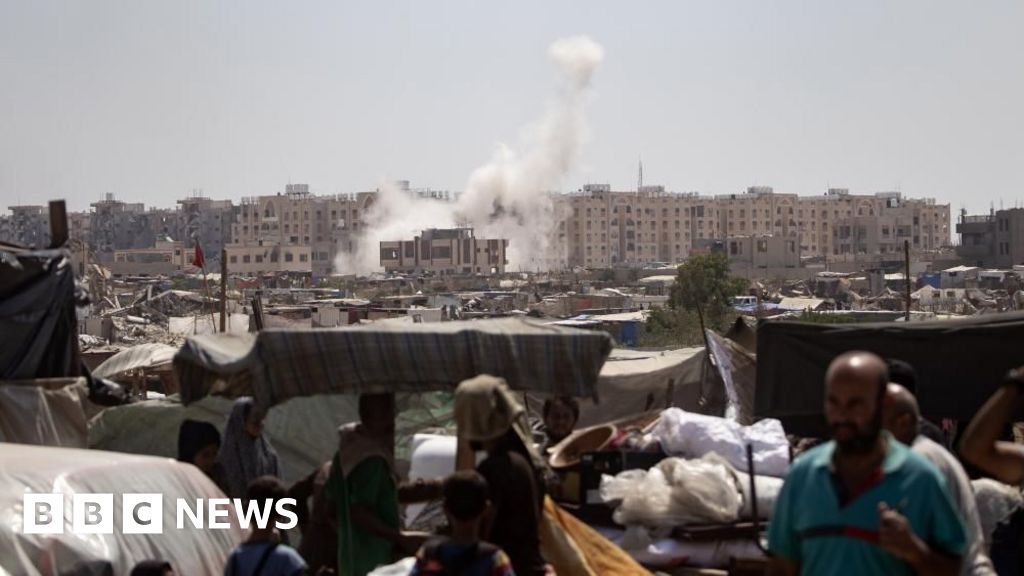US Secretary of State Antony Blinken said now was “probably the best, perhaps the last opportunity” to achieve a ceasefire and the release of hostages in the Gaza Strip.
Mr Blinken made his remarks during a meeting with Israeli President Isaac Herzog on Monday during his ninth trip to the region since the war began in October.
The US has expressed optimism about an agreement since talks resumed in Doha last week. Hamas, on the other hand, describes the progress as an “illusion”. Differences are said to exist, among other things, over whether Israeli troops must withdraw completely from the Gaza Strip, as Hamas stresses.
Mr Blinken is expected to keep up the pressure on Israeli Prime Minister Benjamin Netanyahu when they meet later on Monday.
“We are working to ensure that there is no escalation, that there are no provocations, that there are no actions that would in any way deter us from following through on this agreement or that the conflict would escalate to other places and with greater intensity,” Blinken said at his meeting with Herzog.
“This is my ninth visit to Israel and the Middle East since October 7. This is a crucial moment, probably the best, perhaps the last opportunity to bring the hostages home, achieve a ceasefire and put everyone on a better path to lasting peace and security.”
The current negotiations are based on a modified US proposal aimed at bridging long-standing differences between Israel and Hamas.
The Americans hope that they can get the deal across the finish line perhaps by this time next week.
But this optimism is shared neither by the Israeli leadership nor by Hamas.
Each accuses the other of stubborn cynicism and of blocking a deal.
In a statement on Sunday, Hamas accused Israeli Prime Minister Benjamin Netanyahu of putting up “obstacles” to an agreement and imposing “new conditions and demands” with the aim of “prolonging the war.”
It went on to say that he was “fully responsible” for thwarting the mediators’ efforts and “hindering an agreement”.
A Hamas source previously told Saudi media that the proposals called for a reduced presence of Israeli forces along the Philadelphia Corridor, a narrow strip of land on Gaza’s southern border with Egypt.
But Israeli sources told the Times Israel that other approaches along the border could compensate for an Israeli withdrawal from the area in the first phase of the agreement.
The Israeli military launched a campaign to destroy Hamas in the Gaza Strip in response to an unprecedented attack on southern Israel on October 7 that killed about 1,200 people and took 251 hostage.
According to the Hamas-run Health Ministry, more than 40,000 people have been killed in the Gaza Strip since then.
In November, a ceasefire was agreed in which Hamas released 105 of the hostages. In return, it received a one-week ceasefire and the release of around 240 Palestinian prisoners from Israeli jails. According to Israel, 111 hostages are still being held, 39 of whom are presumed dead.
Earlier this week, US President Joe Biden said we were “closer than ever” to an agreement.
But the optimism expressed during months of sporadic talks proved to be unfounded.
At a cabinet meeting on Sunday, Netanyahu said that complex negotiations were currently underway to release the hostages, but that certain principles must be upheld in the interests of Israel’s security.
“There are things we can be flexible on and there are things we cannot be flexible on and we insist on that. We know very well how to distinguish between the two,” he said.
He also accused Hamas of “stubbornness” in the negotiations and called for further increasing pressure on the militant group.
A senior Hamas official told the BBC on Saturday: “What we have received from the mediators is very disappointing. There has been no progress whatsoever.”
It is possible that the public displays of defiance are primarily a negotiating tactic, but the hostility and distrust are so great that one week for a breakthrough seems very optimistic.
And the pressure from the US also has to do with the timing of Washington’s electoral politics. It feels like the countdown to a deal is ticking faster for the Americans than it did for the two sides in this deal.
The original agreement outlined by President Biden based on the Israeli proposal of May 27 was to proceed in three phases:
- The first would involve a “complete and comprehensive ceasefire” lasting six weeks, the withdrawal of Israeli forces from all populated areas of the Gaza Strip and the exchange of some hostages – including women, the elderly, the sick and the wounded – for Palestinian prisoners held in Israel.
- The second phase would include the release of all other living hostages and a “permanent cessation of hostilities.”
- The third step would be the start of a comprehensive reconstruction plan for Gaza and the return of the remains of the killed hostages.
Meanwhile, the Hamas-run health authority in the Gaza Strip said at least 21 people, including six children, were killed in Israeli air strikes on Sunday.
Israeli forces said on Sunday they had destroyed rocket launchers used to attack Israel from the southern Gaza town of Khan Younis, which has been the scene of heavy fighting in recent weeks in which 20 Palestinians were killed.

